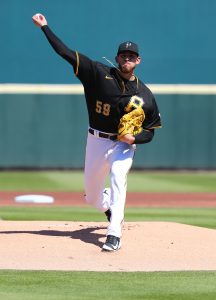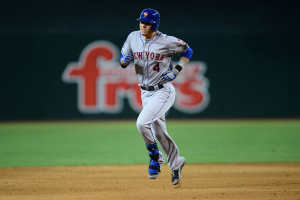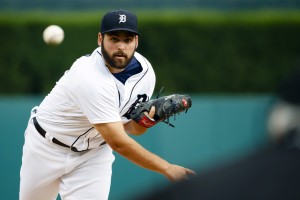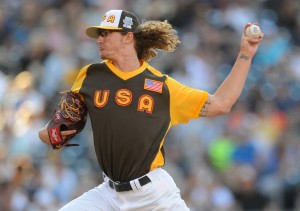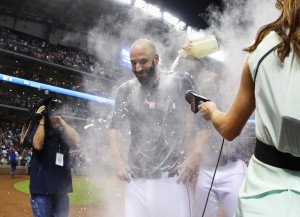The Astros’ run atop the AL West has been buoyed by the presence of one of MLB’s most prolific sluggers, George Springer, and a revolving door of steady veterans in the corners. (Yes, you may insert your jokes here about what else has propelled their run of winning seasons, but the aim here is to take an actual look at the looming roster conundrums they’ll face.) Michael Brantley and Josh Reddick flanked Springer in 2019, while other iterations of the club have included Nori Aoki and Marwin Gonzalez in left field. Over the past few years, the since-traded Jake Marisnick has been a glove-first reserve option to help stabilize the mix.
Now, the Astros stand to not only lose Springer to free agency this coming winter, but also both Brantley and Reddick. Springer will hit the open market for the first time after reaching six years of MLB service, while Brantley’s two-year, $32MM deal and Reddick’s four-year, $52MM pact are both set to expire. Things get even murkier for the Astros with the impending departure of Yuli Gurriel, whose initial five-year deal with the team comes to a close with the 2020 season. Gurriel agreed to a new one-year deal overwriting the final season of that previous pact last offseason, and he’s set to join Springer, Brantley and Reddick this coming winter.
It’s rare that any team, let alone a perennial World Series contender, enters an offseason with the potential of turning over 44 percent of its starting lineup, but that’s the precise situation in which newly hired GM James Click will find himself before year’s end.
On the plus side, the ’Stros have some likely replacements in house already. Kyle Tucker, 23, has been regularly ranked among the game’s elite prospects since being selected just three picks after Houston took Alex Bregman in the 2015 draft. (Bregman, of course, was a college player while Tucker was coming out of high school, hence the discrepancy in their timeline to the big leagues.)
A 2018 cup of coffee for Tucker didn’t produce much in the way of results (.141/.236/.203, 72 plate appearances), but he had a big Triple-A season in 2019 and hit .269/.319/.537 in an identical sample of plate appearances. In 998 PAs at the Triple-A level, Tucker has a .297/.375/.571 slash with 58 homers and 50 steals (in 59 tries). Tucker has All-Star potential that he hasn’t yet had a regular chance to show off due to the team’s largely set outfield mix. At the same time, the Astros have steadfastly refused to consider making him available in trades. He should get his opportunity in 2021 at the latest, and his ability to play all three outfield spots (even if he fits best in a corner long term) give the Astros some flexibility in pursuing other options. The club doesn’t have many pure outfield options right now, having traded the likes of J.D. Davis, Ramon Laureano, Derek Fisher and Teoscar Hernandez away in recent years.
At first base, the club could turn things over to Abraham Toro, who hit .306/.393/.513 in the pitcher-friendly Double-A Texas League before clubbing Pacific Coast League opposition at a .424/.506/.606 clip in 79 PAs. Toro didn’t do much in limited MLB time at the plate, but his bat appears mostly MLB-ready. He’s a third base prospect with questions about his glovework there, and some scouting reports (including those at FanGraphs, MLB.com and Baseball America) suggest that he could fit better at first base or (in FanGraphs’ case) left field. Yordan Alvarez is technically an option in left field or at first base, but the Astros feel better about him as a regular designated hitter and may not be keen on deploying his glove on an everyday basis.
Assuming Tucker and Toro are entrusted with two spots in the lineup, the Astros will still need to bring in at least two everyday players via trade or free agency, and they’ll need to do so with some semblance of cost efficiency. Houston already has nearly $117MM on the books in 2021 and more than $134MM worth of luxury tax obligations. That’s before factoring in arbitration raises on the 2020 salaries of Roberto Osuna ($10MM), Carlos Correa ($8MM), Lance McCullers Jr. ($4.1MM), Chris Devenski ($2MM), Aledmys Diaz ($2.6MM), Joe Biagini ($1MM) and Dustin Garneau ($650K).
Re-signing any of Gurriel, Brantley or Reddick would fill one spot without requiring a particularly long-term commitment, although Reddick’s bat has waned in recent seasons. C.J. Cron and Jake Lamb will both be options at first base, while Nick Markakis, Kevin Pillar and old friends Marwin Gonzalez and Hunter Pence represent short-term outfield possibilities. Springer and Mookie Betts are the top options on the outfield market, but signing either would likely bring the ’Stros within striking distance of a second straight season of luxury penalization. More affordable names include Marcell Ozuna, Joc Pederson and Jackie Bradley Jr.
Trade candidates are a bit more difficult to suss out this far in advance, although it wouldn’t be a surprise if Corey Dickerson (Marlins), Ender Inciarte (Braves), Gregory Polanco (Pirates), Brian Goodwin (Angels), Eddie Rosario (Twins) or Kyle Schwarber (Cubs) were to appear on the rumor circuit this summer.
Regardless of how Click and his staff choose to proceed, the Astros seem likely to be in the hunt for multiple regulars this winter, and their notable arbitration class and crop of high-priced 2021 salaries will necessitate a creative and/or low-cost addition or two.

